A standard 1962 nickel, whether from Philadelphia (no mint mark) or Denver (“D” mint mark), typically holds minimal value in circulated condition ($0.05-$0.10). However, error coins can be exceptionally valuable. The rare 1962-D struck over a Lincoln cent can fetch over $900, while a 1962-D double die reverse ranges from $15-$55 depending on grade. Uncirculated standard nickels may be worth $2-$15. Exceptionally high-grade specimens with special attributes like “full steps” have sold for over $21,000 at auction. To determine value, check the mint mark, inspect for striking errors, and assess the coin’s condition carefully.
That 1962 nickel sitting in your change jar might be worth more than five cents—potentially much more. While most 1962 Jefferson nickels are common coins worth their face value, specific mint errors and high-grade specimens can command prices exceeding $900, with the rarest examples reaching into the thousands. Understanding what makes certain 1962 nickels valuable could turn your pocket change into a profitable discovery.
Understanding Your 1962 Jefferson Nickel
The United States Mint produced Jefferson nickels at two facilities in 1962: Philadelphia (no mint mark) and Denver (marked with a “D”). Both facilities struck millions of these coins, making them abundant in circulation today. The Philadelphia Mint produced 97,384,000 nickels without any mint mark, while Denver added 280,195,720 coins bearing the “D” designation below the date on the obverse.
The composition remains standard for pre-1965 Jefferson nickels: 75% copper and 25% nickel, weighing 5 grams with a diameter of 21.21 millimeters. The obverse features Thomas Jefferson’s profile designed by Felix Schlag, while the reverse displays his Virginia home, Monticello, with the building’s iconic steps—a detail that becomes crucial when determining high-grade value.
Standard 1962 Nickel Values by Mint Mark
For collectors just starting out, here’s what regular 1962 nickels bring in today’s market:
1962 Philadelphia (No Mint Mark)
The Philadelphia-minted nickels represent the smaller mintage of the two varieties. In circulated condition, these coins trade for $0.05 to $0.15, barely above face value. Uncirculated examples start gaining premium value based on their grade:
| Grade | Value Range |
|---|---|
| MS-60 | $2.00 – $3.00 |
| MS-63 | $4.00 – $6.00 |
| MS-64 | $8.00 – $12.00 |
| MS-65 | $15.00 – $25.00 |
| MS-66 | $45.00 – $75.00 |
1962-D Denver Mint
The Denver Mint struck nearly three times as many nickels as Philadelphia, making the 1962-D even more common. Circulated pieces rarely exceed $0.10 in value. Uncirculated specimens follow this pricing structure:
| Grade | Value Range |
|---|---|
| MS-60 | $0.30 – $0.75 |
| MS-63 | $1.50 – $3.00 |
| MS-64 | $4.00 – $8.00 |
| MS-65 | $12.00 – $20.00 |
| MS-66 | $35.00 – $60.00 |
The Denver mintage’s larger production numbers explain why 1962-D nickels generally sell for less than their Philadelphia counterparts in equivalent grades.
The Full Steps Designation Changes Everything
When examining high-grade 1962 nickels, professional grading services like PCGS and NGC pay special attention to Monticello’s steps on the reverse. A “Full Steps” (FS) or “5FS” designation means all five or six horizontal lines on Monticello’s portico are completely visible and fully separated without any weakness or blending.
This designation dramatically increases value. A standard 1962 MS-67 might sell for $200-$300, but add the Full Steps designation, and prices skyrocket. Heritage Auctions sold a 1962 MS-67 5FS for $21,150 in January 2019, demonstrating how this single feature multiplies value by over 70 times. Another example reached $18,000 at auction in similar grade with full steps.
Only a tiny percentage of 1962 nickels achieve Full Steps status due to die wear during production. The Philadelphia Mint’s smaller output makes 1962 no-mint-mark nickels with Full Steps particularly scarce compared to their Denver counterparts.
Valuable Error Coins That Command Premium Prices
Beyond condition, mint errors transform ordinary 1962 nickels into sought-after collectibles worth hundreds or thousands of dollars.
1962-D Struck Over Lincoln Cent
The most valuable 1962 nickel error occurs when a Denver nickel was struck on a Lincoln cent planchet from 1962. This dramatic error creates a coin showing characteristics of both denominations—you can often see traces of Lincoln’s profile beneath Jefferson’s image and remnants of the Memorial building underneath Monticello.
A 1962-D nickel struck over a 1962 Lincoln cent graded MS-64 sold for $940 through Heritage Auctions. These errors happened when cent planchets accidentally entered the nickel striking press, creating a unique minting mistake. The copper color from the cent planchet often remains visible, making authentication easier for collectors.
Fewer than a dozen examples are known to exist, making this among the rarest Jefferson nickel errors from the 1960s.
1962-D Doubled Die Reverse
Doubled die errors occur when the die impresses the design onto the coin multiple times with slight misalignment, creating a doubling effect visible under magnification. The 1962-D features a modest doubled die reverse (DDR) variety most noticeable on “MONTICELLO” and “FIVE CENTS.”
Values for 1962-D DDR nickels based on grade:
- AU-50: $15 – $20
- MS-63: $30 – $40
- MS-65: $55 – $75
- MS-66+: $150 – $300
While not as dramatic as some doubled die varieties, the 1962-D DDR commands steady collector interest and sells for significant multiples over face value.
Off-Center Strikes
Off-center errors happen when the planchet doesn’t align properly with the dies during striking. Values depend on the percentage off-center and whether the date remains visible:
- 5-10% off-center with date: $25 – $50
- 15-25% off-center with date: $75 – $150
- 30-50% off-center with date: $200 – $400
Examples missing the date due to severe off-center strikes typically bring lower prices since authentication becomes difficult.
How to Identify Valuable 1962 Nickels in Your Collection
Start by examining the area below the date on the coin’s obverse. If you see a small “D,” your nickel came from Denver. No letter means Philadelphia produced it. Use a magnifying glass with at least 5x magnification for accurate identification.
Next, assess the coin’s overall condition. Circulated nickels show wear on Jefferson’s cheekbone, the high points of his hair, and Monticello’s columns and steps. Uncirculated specimens display sharp details throughout with no signs of handling or wear. Original mint luster—a soft, satiny sheen—should be present on uncirculated examples.
For error detection, examine both sides carefully under magnification. Look for doubled lettering, particularly on “MONTICELLO,” “FIVE CENTS,” and “E PLURIBUS UNUM” on the reverse. Check if the coin’s color seems unusual—a copper tone might indicate striking on a cent planchet. Inspect the alignment; any part of the design missing at the edge suggests an off-center strike.
The Monticello steps require close inspection. Count the horizontal lines visible on the building’s front steps. Complete separation of five or six lines without any blending earns the Full Steps designation. Most 1962 nickels show some weakness here, making fully struck examples particularly valuable.
Professional Grading Makes the Difference
For any 1962 nickel that appears to be high-grade uncirculated or shows potential error characteristics, professional grading provides authentication and maximizes resale value. The two major services, Professional Coin Grading Service (PCGS) and Numismatic Guaranty Corporation (NGC), charge approximately $20-$40 per coin for standard service levels.
This investment makes sense when the coin’s potential value exceeds $100. The $940 1962-D struck over cent and the $21,150 Full Steps specimen both achieved their remarkable prices because third-party grading confirmed their authenticity and quality. Ungraded examples of the same coins would struggle to find buyers at premium prices due to concerns about legitimacy.
Grading fees seem counterintuitive for a nickel worth five cents, but a MS-67 5FS specimen worth $20,000 easily justifies the $40 grading cost. Even mid-grade errors worth $100-$300 benefit from authentication since counterfeit errors exist in the marketplace.
Where to Sell Your Valuable 1962 Nickels
Online auction platforms like eBay provide access to collectors worldwide. Graded coins typically sell for 80-90% of price guide values on eBay, while raw (ungraded) coins often bring 50-70% of graded equivalents because buyers discount for uncertainty about condition and authenticity.
Major auction houses including Heritage Auctions, Stack’s Bowers, and GreatCollections specialize in coins and achieve top dollar for premium specimens. They charge seller’s fees ranging from 10-20% but deliver access to serious collectors willing to pay premium prices. The $21,150 Full Steps nickel sold through Heritage’s platform specifically because their audience includes collectors pursuing registry sets who pay top dollar for finest-known examples.
Local coin dealers offer immediate payment but typically pay wholesale prices—approximately 60-75% of retail value. This option works well for coins worth $20-$100 where the convenience outweighs maximizing profit. For coins worth several hundred dollars or more, consigning to auction generally nets higher returns despite the wait time.
Coin shows connect you directly with dealers and collectors. Bringing your 1962 nickel to a regional or national show allows multiple dealers to examine it and make offers. Competition between buyers often drives prices higher than single-dealer transactions.
Building Your 1962 Nickel Collection Strategy
Starting a 1962 nickel collection doesn’t require enormous investment. Begin by searching your pocket change and requesting rolls from banks. While finding mint state examples or errors in circulation remains unlikely, the zero-cost approach makes sense for beginners learning to identify valuable characteristics.
Purchase certified examples of both mint marks in MS-64 or MS-65 grades for $8-$25 each. These prices allow you to own attractive specimens without significant expense. As your knowledge and budget grow, target Full Steps examples or authenticated error varieties.
Focus on condition rather than accumulating quantities. Five high-grade nickels worth $50 each create a more valuable collection than 50 worn examples worth $0.10 each. Quality-focused collecting also provides better learning opportunities since examining well-struck, well-preserved coins reveals subtle details missed on circulated specimens.
Join online communities like the Coin Community Forum or NGC Collectors Society. Experienced collectors share knowledge about varieties, errors, and current market values. These forums help you avoid overpaying for common coins marketed as rare and identify genuinely valuable pieces others might overlook.
Start Checking Your Nickels Today
The next 1962 nickel you encounter could be ordinary pocket change or a $900 error coin. The difference lies in knowing what to look for—mint marks, striking errors, and condition details that separate common circulation finds from collectible treasures. Even if you don’t discover a struck-over-cent error, building expertise in Jefferson nickel varieties opens opportunities across the entire series from 1938 to present. Grab a magnifying glass, examine your change carefully, and you might just find that searching through nickels becomes your most profitable hobby.
You may be interested:
- 1859 Indian Head Penny Coin Value Complete Errors List And No Mint Mark Worth Guide For Collectors
- 1911 V Nickel Coin Value Guide Complete Errors List And No Mint Mark Worth Today
- 1902 Dime Coin Value Complete Errors List With O S And No Mint Mark Worth Guide
- 1788 Quarter Coin Value Complete Guide Errors List And D S P Mint Mark Worth Revealed
- 1776 To 1976 Bicentennial Half Dollar Coin Value Complete Errors List And What Your D S And No Mint Mark Coins Are Actually Worth
- 1990 Penny Coin Value Errors List How D S And No Mint Mark Pennies Are Worth Thousands Of Dollars

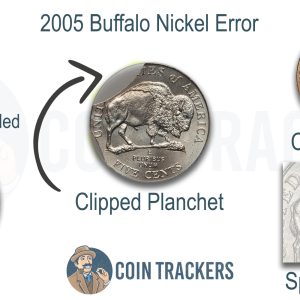
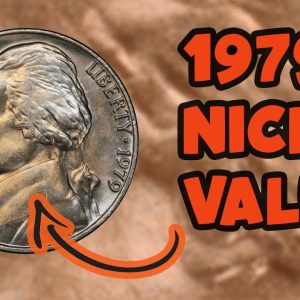
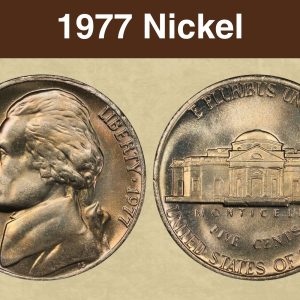
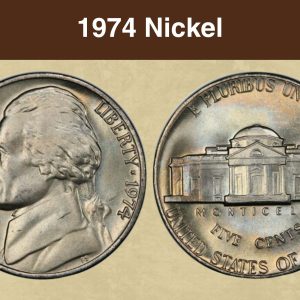
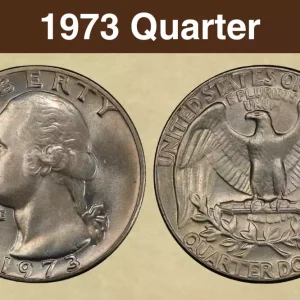
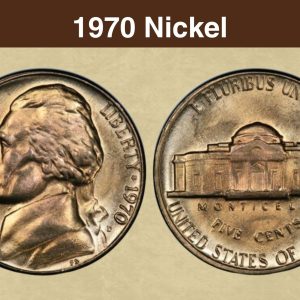
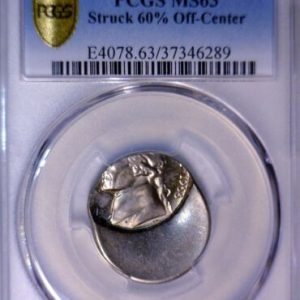
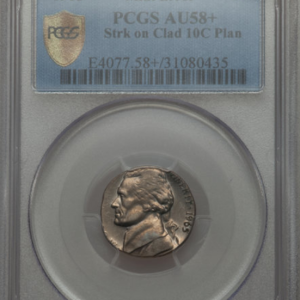
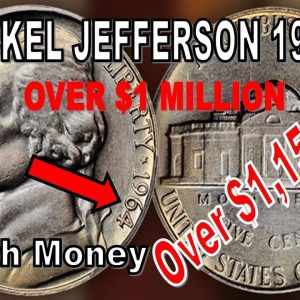
Is a 1962 nickel with no mint mark worth anything?
A 1962 nickel with no mint mark is a Philadelphia mint coin and is worth its face value, around $0.10 to $0.20, in circulated condition. In uncirculated condition, the value ranges from about $0.30 to $2 or more, depending on the grade, and a premium can be found for high-grade or special variety coins.
What is the error on a 1962 nickel?
1962 nickel errors include double dies, off-center strikes, and die cracks, which are minting mistakes that can increase a coin’s value. Other valuable errors involve a coin being struck on the wrong planchet, such as a dime or penny planchet, or a clipped planchet error. Collectors should look for doubled lettering on the reverse (Doubled Die Reverse or DDR) and die breaks or cracks, as these can be particularly valuable.
How much is a 1962 D Jefferson nickel worth?
A 1962-D nickel’s value depends heavily on its condition, ranging from about $0.10-$0.20 for circulated coins to several thousand dollars for high-grade, uncirculated examples with desirable features like “full steps”. Circulated coins are worth very little, while uncirculated coins (MS-65 or higher) with good luster and well-defined details can be worth $300 to over $3,000 or more, especially if they are certified by a professional grading service.
What nickel error to look for?
Key nickel errors to look for include doubled dies, where design elements are doubled due to die strikes, off-center strikes, where the coin is struck outside its intended position, and mint mark errors, such as doubled or missing mint marks. Other valuable errors are speared bison on 2005 nickels, the 1943 double die Jefferson nickel, and 1937-D Buffalo nickel three legs.